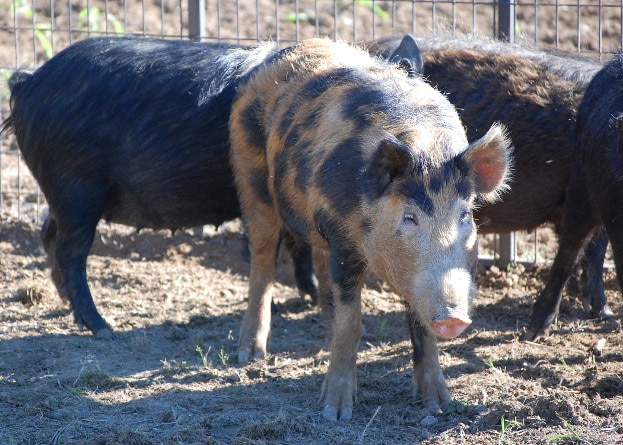In recent years, wild pigs have been a controversial topic in wildlife and agricultural discussions from top government officials to local farmers talking over the fence.
Wild pigs are considered nuisance animals in Mississippi because of their ability to create widespread and devastating damage. Many researchers and wildlife managers have suggested that wild pigs could be North America’s most threatening invasive mammal species in terms of agricultural damage, disease transmission, native plant survival and water quality.
Wild pigs are not native to North America. Spanish explorers first brought them to the continent in the 1500s and, as was a common practice, allowed them to range freely with other domestic livestock. Over time, many free-ranging domestic swine went wild, or feral. The problem increased when North Americans began importing Eurasian wild boar to serve as either huntable big game or a novel species of commercial livestock.
Boar that escaped or were released started more populations or interbred with wild domestic stock. Today, the term “wild pig” is used collectively to refer to Eurasian boars, feral domestic pigs, and the hybrids that result from the interbreeding of the two.
Once found primarily in the Southeast, wild pigs have significantly expanded their range over the past few decades. Today, there are an estimated 4 million to 6 million wild pigs in North America, spread across more than 47 states and at least four Canadian provinces. Although some of the wild pig expansion can be attributed to their high reproductive rates, along with adaptability to almost any habitat, the accelerated pace of their spread is due to people translocating them for hunting opportunities.
In 1988, only about 3.5 percent of Mississippi had wild pigs, with little damage reported. By 2009, the Southeastern Cooperative Wildlife Disease Study reported nearly 40 percent of the land area in Mississippi had wild pigs, with damage being reported to some crops and timberland.
In 2015, a Mississippi State University landowner survey showed that at least 50 percent of the agricultural producers contacted had seen wild pigs on their property. The study further indicated a more widespread distribution of wild pigs across the state than previously reported, with the animals inhabiting about 27.9 million acres of Mississippi land.
The same MSU landowner survey also collected information on the economic impact of wild pigs to agricultural operations, including direct crop loss, labor costs, repair costs and investment and maintenance of control methods. In total, producers reported between $5.69 and $6.32 loss per acre of land, which translates to between $60 million and $67 million of economic loss. Interestingly, most of these costs were associated with ongoing control, such as trapping and shooting, as well as repairing damage caused by the pigs.
In attempts to reduce wild pig damage in Mississippi, educational programs and materials are being created to illustrate their damage. Agricultural producers and the general public were polled about their attitudes toward wild pigs. Overwhelmingly, both groups agreed that wild pigs represent a threat to the environment, native wildlife, natural resources, and livestock. They agreed wild pigs cause significant agricultural damage and that legislation preventing transportation of live wild pigs should be enforced.
Currently, it is illegal to transport live wild pigs without a permit from the Mississippi Department of Wildlife, Fisheries, and Parks.




